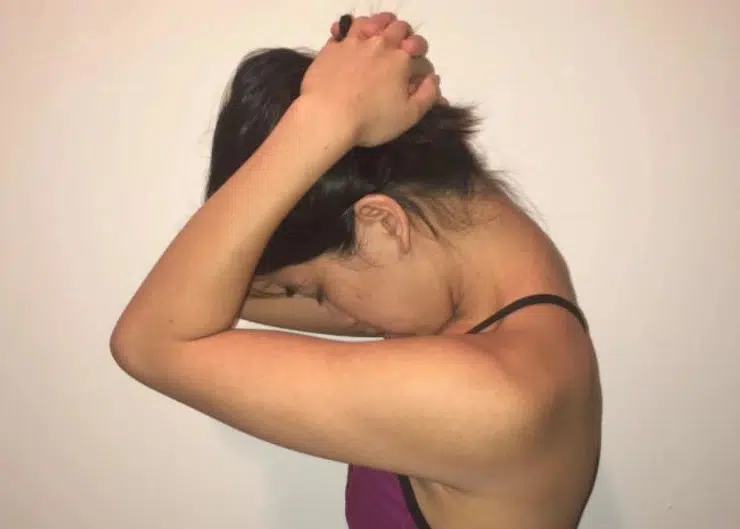Ever feel like your head weighs 100 pounds by the end of the day? Or that deep, annoying ache right at the base of your skull — the kind that doesn’t go away no matter how many times you rub your neck?
If that sounds familiar, your suboccipital muscles are probably the culprits. These tiny but powerful muscles at the top of your neck play a huge role in head movement and posture. And when they’re tight, irritated, or overworked, they can cause everything from tension headaches to neck stiffness to eye strain.
The good news? There’s a simple, effective solution: suboccipital muscle stretching — when done correctly. In this post, we’ll dive into what these muscles do, why they get tight, how to stretch them safely, and when to get expert help from the team at Revolution Rehab.
What Are the Suboccipital Muscles?
The suboccipitals are a group of four small muscles located just beneath the back of your skull. They connect your atlas (C1) and axis (C2) vertebrae to the base of your skull (the occiput).
They include:
- Rectus Capitis Posterior Major
- Rectus Capitis Posterior Minor
- Obliquus Capitis Superior
- Obliquus Capitis Inferior
While they may be small, these muscles are constantly active — stabilizing the head, allowing fine motor control, and supporting posture during daily activities like reading, texting, or working at a screen.
But here’s the problem: modern life overworks them. Bad posture, tech neck, stress, and lack of movement all lead to tension in the suboccipitals.
Why Tight Suboccipitals Matter
Tightness in the suboccipital area doesn’t just stay in the neck. These muscles are deeply connected to both neurological and structural systems in the body. When they’re tight or irritated, you might feel:
- Tension headaches that wrap around from the base of the skull to the eyes
- Neck stiffness and reduced range of motion
- Visual disturbances or light sensitivity
- Dizziness or imbalance
- Jaw tension and even tinnitus in some cases
The reason for this is simple: The suboccipital triangle surrounds the vertebral artery and is near the greater occipital nerve — both of which can get compressed or irritated when these muscles become hypertonic (overactive and tight).
Stretching these muscles isn’t just about comfort — it can dramatically affect how your entire head and neck system functions.
Common Causes of Suboccipital Tightness
1. Poor Posture
Long hours spent looking down at phones, tablets, or laptops cause the head to shift forward. That forces the suboccipitals to constantly work to keep your head upright, leading to fatigue and tightness.
2. Stress and Clenching
When you’re stressed, your upper trap and suboccipital areas tend to contract involuntarily — think of that “tension” you feel when you’re anxious or focused.
3. Eye Strain and Visual Focus
Because these muscles help control head position in response to vision, excessive screen use without proper breaks can cause overuse.
4. Lack of Movement
Sedentary lifestyles mean these muscles rarely get full range of motion. Over time, that restriction becomes your “new normal.”
5. Injury or Whiplash
Car accidents, sports injuries, or falls can cause micro-trauma or scar tissue in the suboccipital region.
How to Tell If Your Suboccipitals Are Tight
Try This Quick Self-Test:
- Sit upright and slowly tilt your head back, looking toward the ceiling.
- Feel any stiffness or tension at the base of your skull?
- Now, tuck your chin in gently (double chin style). Feel a pull in that same area?
If yes, your suboccipital muscles are likely shortened or restricted.
Other signs include headaches that start at the neck and creep up, soreness after screen time, or difficulty turning your head fully.
If you’re dealing with more severe symptoms — like vision changes, dizziness, or sharp pain — it’s worth getting a full assessment at Revolution Rehab before diving into stretches.
Suboccipital Muscles Stretch: How to Do It Right
This isn’t your average neck stretch — and doing it wrong can make things worse. That’s why we teach clients how to gently release and elongate these deep muscles without strain.
The Chin Tuck + Overpressure Stretch (Our Go-To)
- Sit or stand with good posture.
- Gently tuck your chin back, like you’re making a double chin — don’t look down.
- You should feel a light stretch at the base of your skull.
- For added stretch, place two fingers on your chin and gently apply backward pressure.
- Hold for 10–15 seconds.
- Repeat 3–5 times, a few times per day.
The goal is subtlety. Don’t force it. This stretch encourages decompression of the suboccipital area and resets the deep neck flexors.
Other Techniques We Use at Revolution Rehab
- Suboccipital release with lacrosse ball: Lying on a ball at the base of the skull for trigger point release
- Manual therapy: Gentle hands-on work to mobilize the fascia and joint capsules
- Neurodynamic exercises: To restore balance in the greater occipital nerve
- Cervical spine mobility drills: For long-term structural change
Want a personalized version of this? That’s where we come in — we tailor the stretch and release techniques to fit your posture, your anatomy, and your goals.
Preventing Suboccipital Tension
Once you’ve stretched them out, the next step is keeping them loose.
1. Fix Your Ergonomics
- Keep your screen at eye level
- Sit with your ears over your shoulders
- Use lumbar support and a neutral neck position
2. Take Movement Breaks
Stand up every 30–45 minutes. Roll your shoulders. Look side to side. Reset your posture throughout the day.
3. Strengthen the Deep Neck Flexors
Exercises like chin tucks with resistance or wall head glides build endurance in the muscles that support proper neck alignment.
4. Address the Whole Kinetic Chain
Tight suboccipitals are often the effect, not the cause. At Revolution Rehab, we look at everything from thoracic mobility to breathing patterns to shoulder alignment.
When to See a Pro
If stretching alone isn’t cutting it — or if you’re still dealing with daily headaches, restricted neck movement, or eye fatigue — it’s time to bring in expert help.
At Revolution Rehab, we take a full-body approach. That means we don’t just stretch tight muscles — we figure out why they’re tight in the first place and fix the root of the problem.
We use a combination of:
- Manual therapy
- Dry needling
- Postural training
- Targeted mobility work
- Personalized exercise programs
And yes — we’ve helped tons of clients who thought they’d be stuck with “tech neck” or tension headaches forever.
You don’t have to live like that.
Ready to Release the Tension?
If you’re tired of dealing with nagging headaches, tight neck muscles, and limited range of motion, stretching your suboccipitals might be your missing link — but getting the technique right is everything.
Let our team at Revolution Rehab guide you with personalized treatment plans, expert-level manual therapy, and the kind of care that doesn’t just patch things up — it actually fixes them.
Book your appointment today and experience what it’s like to live without tension in your neck and head. We’ll help you move, feel, and perform better — from the top down.


